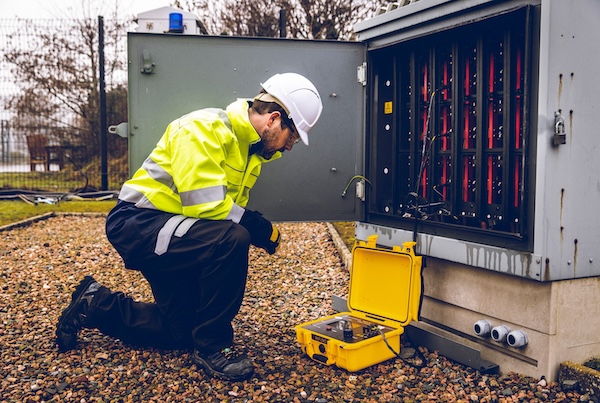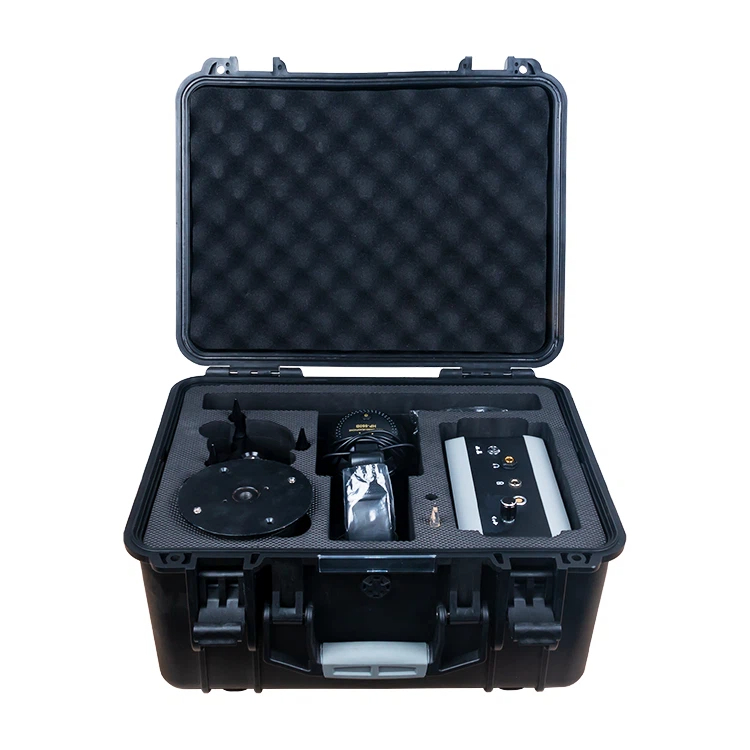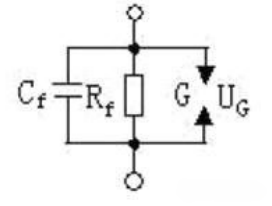Causes and classification of cable faults
Causes of Cable Faults
The causes of underground power cable faults can be broadly categorized into several types:

1. Mechanical Damage
Mechanical damage accounts for a significant proportion of cable faults. Some mechanical damage may be minor at the time of occurrence and does not lead to a fault immediately. However, it can develop into a fault months or even years later. The main causes of mechanical damage to cables include:
(1) Damage during installation, such as accidental bumps, excessive tension during mechanical pulling, or excessive bending that causes damage.
(2) Direct external force damage, such as construction activities on or near the cable route after installation. (3) Vibrations from passing vehicles or impact loads can also cause cracks in the lead (or aluminum) sheath of underground cables.
(4) Damage caused by natural phenomena, such as expansion of the inner insulation rubber causing the shell or cable sheath to crack, abrasion of the cable jacket at pipe mouths or supports, or excessive tension due to soil settlement, which can lead to broken intermediate joints or conductors.
2. Insulation Moisture
Insulation moisture can lead to a decrease in cable withstand voltage and subsequent faults. The main causes of moisture in cables include:
(1) Inadequate sealing or poor installation of joint boxes or terminal boxes, leading to water ingress.
(2) Manufacturing defects in the cable, such as small holes or cracks in the metal sheath.
(3) Penetration of the metal sheath due to external objects piercing or corroding it.
3. Insulation Ageing and Degradation
Insulation ageing can lead to a decrease in cable withstand voltage and subsequent faults. The main causes of insulation ageing include:
(1) Degradation due to impurities or voids within the cable dielectric under the action of an electric field, resulting in ionization and hydrolysis.
(2) Overheating caused by overloading of the cable or poor ventilation in the cable duct.
(3) Loss of insulation oil in oil-insulated paper cables.
(4) Exceeding the service life of the power cable.
4. Overvoltage
Overvoltage can cause the insulation of cables with defects to experience electrical breakdown, leading to faults. The main causes of overvoltage include atmospheric overvoltages (such as lightning strikes) and internal overvoltages (such as switching overvoltages).
5. Design and Manufacturing Defects
Poor design and manufacturing processes of cable heads and intermediate joints can also cause cable faults. The main reasons include:
Inadequate electric field distribution design
Improper material selection
Poor manufacturing processes that do not comply with regulations For testing the specific causes of cable faults, it is recommended to use professional cable fault testing equipment. Wrindu's RDCD-II-503B cable fault tester is recommended. Click on the yellow font to directly navigate to the detailed introduction page of the product. Its main features are as follows:

Advanced Precision: Acoustic-magnetic synchronous positioning technology for automatic time difference calculations, minimizing reliance on sound monitoring.
Crystal-Clear Detection: Noise reduction technology that effectively filters environmental interference, ensuring distinct fault location discharge sounds.
Versatile Operation: The freedom to choose between traditional acoustic and advanced acoustic magnetic measurement methods, tailored to operator preferences.
Customizable Settings: Manually adjustable gain and trigger values for precise acoustic and magnetic signal fixation.
Intuitive Display: A 5-inch touch screen LCD with high brightness for perfect visibility even in bright sunlight.
Enduring Power: Built-in high-capacity lithium-ion battery with fast charging capabilities for extended use without interruption.
Elegant Mobility: A compact, portable, and lightweight design for effortless handling in any environment.
Classification of Cable Faults by Nature and Type
1. Classification by Fault Material Characteristics
Faults can be categorized into three types: series faults, parallel faults, and complex faults.
(1) Series Faults Series faults (metallic material defects) refer to faults where one or more conductors (including lead or aluminum sheaths) are broken. This is considered a general form of cable open-circuit fault. The continuity of the cable core is disrupted, resulting in complete or incomplete breaks. Incomplete breaks are particularly difficult to detect.
(2) Parallel Faults Parallel faults (insulation material defects) occur when the insulation level between conductors or between conductors and the sheath decreases, causing a short-circuit fault that cannot withstand normal operating voltages. This is a general form of cable short-circuit fault and can manifest as short circuits, ground faults, or flashover breakdowns, which are commonly seen in the field.
(3) Complex Faults Complex faults involve defects in both the insulation and metallic materials of the cable core. They can include scenarios such as a phase break with grounding, two-phase breaks with grounding, or two-phase short circuits with grounding.
2. Classification by Fault Point Insulation Characteristics

Based on the insulation resistance (Rf) at the fault point and the breakdown gap (G), cable faults can be further classified into open-circuit faults, low-resistance faults, high-resistance faults, and flashover faults. This classification is particularly useful for selecting the appropriate fault detection method.
(1) Open-Circuit Faults These faults involve a break in the continuity of the cable's metal parts, resulting in an open circuit, and varying degrees of damage to the insulation material. The insulation resistance measured with a megger is infinite (∞), but a breakdown can occur during DC withstand tests; continuity checks of the core wires will reveal a break. These faults often appear as a single phase or two phases grounded.
(2) Low-Resistance Faults These faults occur when the insulation material is damaged, resulting in a ground fault. The insulation resistance measured with a megger is less than 10Z0 (where Z0 is the cable's characteristic impedance, usually between 10 and 40 ohms). Low-resistance faults are more commonly seen in low-voltage power cables and control cables.
(3) High-Resistance Faults These faults also result from insulation damage but have a higher resistance value. The insulation resistance measured with a megger is greater than 10Z0, and the fault point will break down during a DC high-voltage pulse test. High-resistance faults are the most common type of fault in high-voltage power cables (6KV or 10KV power cables) and can account for over 80% of total faults. In field measurements, a value of Rf = 3KΩ is generally used as the threshold to distinguish between high-resistance and low-resistance faults. When Rf = 3KΩ, it provides the necessary 10–50mA measurement current for accurate loop method bridge measurement.
(4) Flashover Faults These faults occur when the insulation material is damaged and causes a flashover. The insulation resistance measured with a megger is infinite (∞), but a flashover breakdown will occur during DC withstand or high-voltage pulse tests. Flashover faults are difficult to measure, especially when they appear in newly laid cables during preventive testing. DC flashover testing is commonly used in the field for detection.
Classification of Faults by Causes and Fault Point Characteristics
Based on the different characteristics of insulation damage in power cables during operation or preventive testing, faults can also be divided into three types: explosion faults, breakdown faults, and running faults.
(1) Explosion Faults In industrial and mining enterprises, power cables in operation can experience severe insulation damage due to various reasons, leading to circuit breaker trips, known as cable explosions. The main characteristics of these faults include:
Most cable fault points have damaged lead or copper sheaths, with varying degrees of external deformation.
The nature of the cable fault often manifests as two-phase short-circuit grounding or two-phase break grounding, with generally smaller grounding resistance.
Upon dissection, the fault point can reveal arc-penetration carbonization points or tree-like discharge carbon tracks and cracks.
Cable explosion faults have distinct characteristics, and in most cases, the operating personnel can provide an approximate location of the explosion.
Therefore, except for a few more complex cases that require ranging, generally, only a multimeter is needed to determine the specific nature of the fault (single-phase grounding, short-circuit grounding, break grounding, etc.), and the acoustic method can be used directly for fault location, which is simple and clear.
(2) Breakdown Faults In practical work, cable insulation damage caused by preventive testing is commonly referred to as cable breakdowns. These faults always occur under DC test volt ages and are caused by electrical breakdown. The insulation damage is characterized by electrical breakdown, and the grounding point generally remains intact (except for mechanical damage). Cable breakdown faults are mostly simple grounding faults, with higher grounding resistance. Upon dissection, there are no carbonization points in the insulation material, but carbon pits and water tree aging structures can be found through instruments. For cable breakdown faults, especially some high-resistance grounding cable breakdown faults, the difficulty lies in ranging. Since these faults are relatively hidden, the test parameters are complex and changeable, lacking regularity, so the key to quickly finding the cable fault point is ranging. "High-voltage return method" and "electric hammer method" are the most effective methods for detecting these faults.
(3) Running Faults It refers to cable faults in the factory power system during operation, including faults in the cable feed lines, motor, and transformer cable leads, with voltage fluctuations or grounding signals in the high-voltage secondary circuit (such as grounding trips in power elements with grounding protection). After eliminating the possibility of other power element faults, these are determined as cable faults. The main characteristics of these faults are as follows:
The extreme form of running faults is cable explosion (such as phase-to-phase short circuit caused by two-point grounding).
Some running faults develop into cable breakdown faults when checked at the stopping point due to failing to pass the withstand voltage test (such as cable aging, insulation defects, etc.).
Some running faults are caused by improper installation positions of the cable leads (such as insufficient distance between cables or to the ground, dirt on the cable heads, or water ingress into the motor base).
The most unclear are those transient grounding, unstable flashover running faults.
After the cable is de-energized, insulation resistance measurements and DC withstand tests can pass in many cases, but the cable can still operate normally for a period of time after being put back into the system; the remaining are single-phase grounding cable faults, accounting for about 40% of running cable faults.
These grounding faults generally have no obvious external deformation, and the grounding resistance is not too high (usually dozens to hundreds of ohms).
Upon dissection, there are fine carbonization points.
The causes of cable running grounding faults are twofold: one is natural aging of the insulation layer due to prolonged operation, and the other is rapid damage to the cable sheath in corrosive environments, with corrosive gases entering the insulation layer and causing deterioration.
Whether it is aging or deterioration of the cable insulation layer, the breakdown voltage will decrease, ultimately leading to electrical breakdown at the rated power frequency voltage and thus causing cable grounding faults.
These faults can be detected using the "low-voltage return method"; using the "electric hammer method" also has good effects.
(4) High-Resistance Faults
Cable faults can be divided into high-resistance and low-resistance cable faults based on the resistance value at the fault point. When performing DC withstand tests on high-resistance faults, as the test voltage is increased, the leakage current at the cable fault point changes little. When the voltage reaches a certain value, the cable fault point breaks down, and the leakage current suddenly increases. The breakdown voltage obtained from repeated tests is generally the same. Such cable faults are called breakthrough high-resistance cable faults. This kind of breakthrough high-resistance cable fault can be quickly and accurately located using the secondary pulse method or the triple pulse method combined with impulse discharge.
There is another situation for high-resistance faults in power cables. During DC withstand tests, the leakage current is large and rises synchronously with the test voltage, without any current mutation phenomenon. Such faults are called unbreakable high-resistance cable faults. Most of these faults are caused by moisture ingress into the main insulation layer of the cable, mainly due to the following reasons: quality defects in the cable joint or terminal heads or non-standard cable construction processes, resulting in poor sealing or failed sealing; manufacturing defects in the cable body, with holes or cracks in the cable sheath; the cable sheath is damaged by external force or corroded through.
In this case, high-voltage bridge testing should be used. When the main insulation layer of the cable is moistened, the discharge area at the fault point is large, and the energy is not concentrated, so there is no obvious discharge arc. Therefore, the secondary pulse method or the triple pulse method cannot get an effective fault waveform. For such faults, when locating the cable fault, it is necessary to arc the cable first. Arc means applying a high-voltage DC voltage to the fault cable using cable fault testing equipment. Since most of the leakage current is concentrated at the cable fault point, the current's thermal effect at the fault point generates high temperatures. The moisture in the cable insulation layer expands and evaporates due to the heat, exiting the cable from the damage site, breaking the discharge channel composed of moisture in the insulation layer. A discharge gap is formed. During the arc process, attention should be paid to adjusting the arc current size to ensure the arc effect while avoiding damage to the main insulation of the cable at other locations.
After the moisture is sufficiently discharged from the fault point, the unbreakable high-resistance fault has already transformed into a breakable high-resistance fault, and the withstand voltage of the fault point can also be significantly improved, allowing a strong discharge arc to appear. Using the secondary pulse method or the triple pulse method combined with impulse discharge can then quickly and accurately locate the fault point. In summary, understanding the various causes of cable faults and their characteristics is crucial for effective fault detection and repair. The use of advanced testing equipment, such as the RDCD-II-503B cable fault tester mentioned earlier, can greatly facilitate these processes, ensuring the reliable operation of electrical systems.




